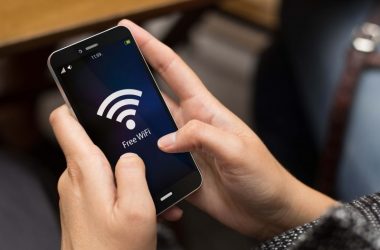 With the “Windows phones” being announced, Microsoft swallows its pride, confesses the error of its ways, and takes an oath that it will never, ever be irrelevant in the mobile space.
With the “Windows phones” being announced, Microsoft swallows its pride, confesses the error of its ways, and takes an oath that it will never, ever be irrelevant in the mobile space.
Nearly 30 phones from half-dozen manufacturers are on the list of handsets running Windows Mobile 6.5, which was unveiled early this year. The new software version, clearly influenced by the success of Apple's iPhone, is designed to simplify the user experience and create a more “finger friendly” interface.
The most immediate short-term user impact is likely to be the greatly improved browsing experience with Internet Explorer Mobile 6, the first full Microsoft Web browser on its Windows phones, drawing on code from desktop IE 6, 7 and 8.
How successful the latest mobile reinvention will be remains to be seen. But the visible and more importantly invisible changes in Microsoft's mobile operating system plan reflects CEO Steve Ballmer's blunt public admission that the company had “screwed up” and his equally blunt vow that “this won't happen again.”
Ballmer even admitted that the 6.5 release is not the version he wanted to see released (the next big release is due in 2010). But the new version does represent the first indication of a big change: Microsoft has quietly cancelled its longstanding effort to stamp the PC-based “Windows Experience” onto mobile devices.
“That [approach] worked in 2006,” says Ramon Llamas, senior research analyst for mobile device technology and trends at IDC. “But since then you have all these other devices — iPhone, BlackBerry, Palm Pre — that offer highly intuitive user interfaces that make using these phones really interesting.”
“The word I hear from Microsoft over and over is, 'We're trying to make experience intuitive,'” Llamas says. “Some of the new features [in 6.5] are stepping away from the PC experience. They're working with the screen real estate, the processor, the memory that actually exists on these devices.”
These rival phones made consumers sit up and notice. And enterprise users as well. “When the iPhone came out, it was a consumer device,” says Mort Rosenthal, CEO of Enterprise Mobile, a mobile integrator launched with Microsoft funding to implement Windows Mobile enterprise deployments. “But the appeal of the interface and experience was quite compelling for enterprise users.”
One result, he says, is that enterprises are adopting and supporting multi-vendor mobile platforms. So much so, that Enterprise Mobile recently announced it was embracing not just Windows Mobile but iPhone and BlackBerry.
One interpretation of this is that it took four years for Windows Mobile to reach the market share that BlackBerry operating system had before the smartphone market exploded. At the same time, Windows Mobile is relying on a broad base of handset vendors to do this. BlackBerry only relies on itself. The other piece of this is how quickly Mac OS X (iPhone) quickly grabbed market share practically overnight by relying only on its own devices and not another device manufacturer.
The details of the new interface, announced last January, have been gnawed over by tech fan boys and anti-fan boys ever since.
Microsoft has now taken to labeling smartphones with its operating system as simply “Windows phones,” which increasingly refers less to the details of the user interface, and more to the underlying Windows development APIs, ensuring continued commitment from software developers, and to links with Web services and with Windows Server capabilities.
“Choice and freedom are two themes we're stressing,” says Gregg Sullivan, senior product manager for Microsoft's Mobile Communications Group. “You can choose the form factor, the phone maker, the network operator, and whether to get your software from an online marketplace or a third party.”
Sullivan's litany of choice is a clear counterpoint to the Apple's approach: essentially one phone type, from one vendor, on one network, with one source of applications.
But it's an approach that's worked well for both Apple and RIM. Here are the market share numbers for North America over four years: Windows Mobile, 10% (2004) and 26.9% (2008); BlackBerry operating system, 48% (2004) and 43.1% (2008); and Mac OS X; zero (2004) and 16.3% (2008).
IDC's Llamas notes that it “took four years for Windows Mobile to reach the market share that BlackBerry OS had before the smartphone market exploded.” Microsoft is relying on multiple vendors to expand its reach.
Microsoft says it's introducing this choice in retooled relationships with handset makers and network operators, which are being lured by the open source Android phone platform backed by Google and the Open Handset Alliance. Microsoft is working closely with phone makers who are being encouraged to layer their own UI over the underlying operating system.
HTC, Microsoft's biggest OEM partner, has already done this with the 6.1 release as the basis for its TouchFlo 3-D UI, and LG Electronics created its S-Class 3-D interface, featured in the LG Arena KM900 smartphone introduced earlier this year.
“Microsoft has held complete control over the experience starting with the opening homescreen,” notes Kevin Burden, practice director, mobile devices, with ABI Research. “Now they're saying, 'let's loose that control and let the OEMs skin innovation over the OS.”
“What Microsoft has realized is that you can't recreate the PC experience on the mobile phone, but you can make it a better companion to the PC, an extension of it,” Burden says.
The level of Microsoft's integration is taking place behind the scenes. From the UI perspective, Microsoft plans to enable multiple tasks such as instant messaging and an array of social networking applications and services to work consistently across Windows phones, with Windows PCs and servers.
With the new phones, users can manage multiple e-mail accounts with Outlook Mobile and Exchange Server synchronization. They can sync files on the phone through Windows Live Media Manager and play media files with Windows Media Player.
“We'll build more and more of this into Windows and Windows phones,” Sullivan says.
New services such as MyPhone, a free backup and recovery Web service for Windows Phones users, and the Windows Marketplace (launching initially with 246 applications), where users can search, buy, and download applications, are part of a larger industry trend that lets users leverage cloud-based services and processing.
These are not superficial changes. Over the past 18 months, Microsoft has revamped the entire mobile effort, bringing a host of new marketing and engineering under a new top exec for the Mobile Communications Business, Andrew Lees, who grew Microsoft's server products into a multi-billion-dollar franchise. Terry Myerson, formerly the lead for the Exchange team for eight years, now overseas the mobile operating system development work. Joe Belfiore joined the mobile group this year, from Microsoft's Zune media player team. Previously he had headed up the the Windows Media Center work. Another transplant is Charlie Kindel who has been general manager of Windows Home Sever.
In addition, Microsoft says that almost 20% of its prestigious Microsoft Distinguished Engineers have joined the mobile operating system group.
“They know that Windows Mobile is in deep trouble and [Lees] and the new organization are brought into resurrect it and to compete favorably with the iPhone, Android devices, etc.,” says Gartner mobile analyst Ken Dulaney. “Andy was formerly in charge of some things in the server area and Gartner has a good opinion of him. In my meetings, he is a fast learner about a new business. But he doesn't come in with Steve Jobs' fine touch for what makes a great product and we don't know if he has those skills.”





